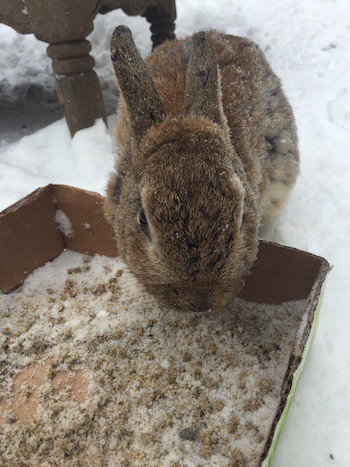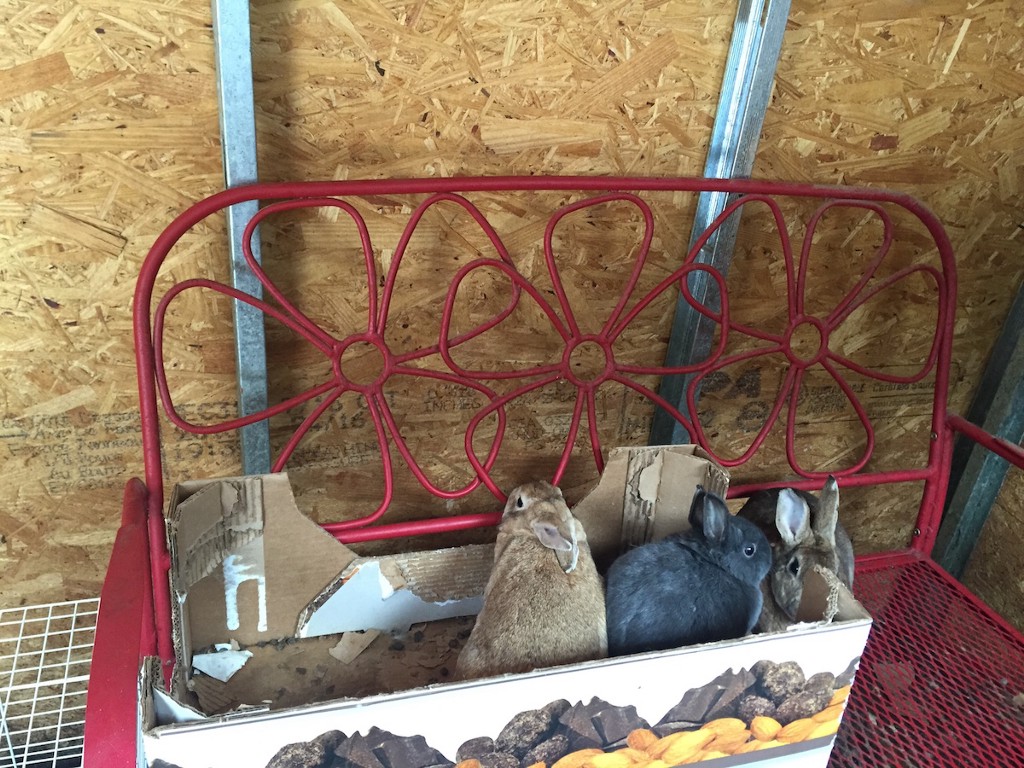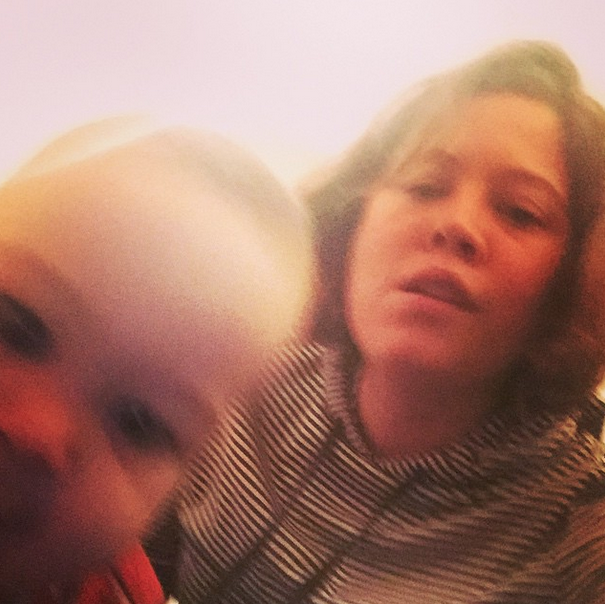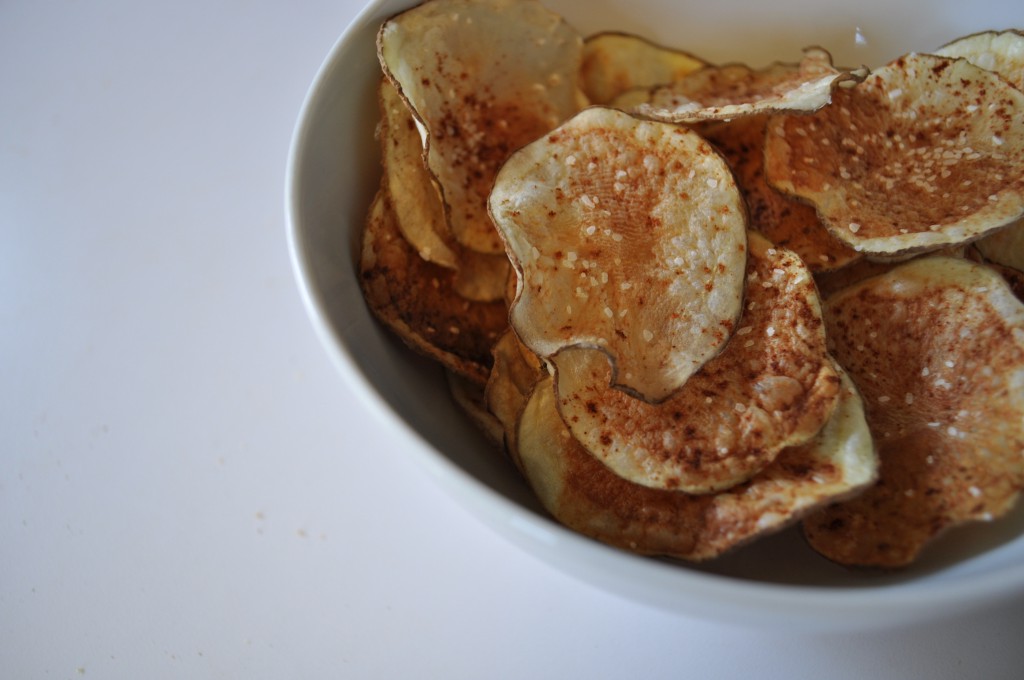The Rabbit Woman of Gowanus
by Rebecca McCarthy

Last Monday, during Winter Storm Juno, the NYPD seized seventy-four rabbits from a vacant lot behind a tire shop in Gowanus. On Thursday afternoon, the authorities returned. “When they went back I’m told that the basement of the entire shop was full of rabbits and they were in very, very, very bad condition,” Jeff1, who works for Rabbit Rescue and Rehab, told me. “Apparently, what this woman has been doing is culling the sick ones and segregating them from the ones that were hopping around the yard. The ones they got today, many of them had very serious injuries from fighting and many of them appear to have syphilis.”
Earlier that night, I was tending bar, and though I got to close early, it wasn’t early enough. The subways had shut down, all non-emergency vehicles had been ordered off the streets, and the four people I’d managed to get to come to the bar were stranded. Barricading the door and drinking all night was an option, but not a very appealing one, and we were a motley enough crew that we already sounded like a bad joke. An Irish guy, an Iranian, and two kids from Jersey get stuck in a bar… So, after closing the bar, we set out, through the two inches of snow that had brought the city to its knees, toward my friend Leila’s apartment. We made it to Ninth Street and Third Avenue when we saw the cops conducting a raid on what appeared to be a stash house. As we got closer, it became clear that it wasn’t drugs they were confiscating, it was rabbits. Not just a few rabbits, but a relentless stream of them, some in cages and some in cardboard carriers. The owner of the rabbits, Dorota Trec, and her landlord descended upon us almost immediately.
“They are taking my rabbits!” Trec said. She was a short woman, with a round face and a thick Polish accent. “They cut the lock on the gate!”
“I’m a journalist with the New York Times,” Fitz, my friend, said. “I’ll sort this out. Why are you wearing that mask?” The landlord was wearing a hospital mask.
“It’s cold,” the landlord said. We all nodded, as if that was a reasonable response.
“He’s not with the New York Times,” I said, pulling Fitz away as he started to walk into the lot.
“It doesn’t matter, just pretend,” Trec said. She grabbed Leila’s arm. “You pretend, say New York Times.”
“I clearly do not work for the New York Times,” Leila said. After some confusion we managed to make an escape, but when Leila and I walked by the tire shop the next morning, Trec and her landlord were sitting outside in a minivan. He’d ditched the hospital mask. Trec was wearing a lime-green peacoat and sweatpants with the words Trouble ❤’s Me printed down the left thigh. She rolled down the window when she saw us.
“Is that your real hair?” she asked Leila. Leila confirmed that it is her real hair. “You do not brush your hair.” Leila confirmed that she does not. With this out of the way, we were ushered into the yard where four rabbits that escaped the raid were still hopping around, doing bunny stuff.

“They are fine, you see? They are happy. Look at them, look how fat they are,” Trec said, pointing to a black rabbit. “Look at this bumblebee.” She was right on one count at least. The rabbits are fat and adorable, worthy of being called bumblebees, but a few of them had tufts of fur missing and I wouldn’t really say they looked happy. They looked like what they are — rabbits that live in a vacant lot behind a tire shop. That morning the yard was blanketed in snow and seemed almost quaint, but a day before the scene was much bleaker.
The rabbits had been there for a while. Trec told me that this is their third winter behind the tire shop, which is a point of pride for her. She believes she’s bred them to be tough.“The project is to have them outside to imitate wildlife,” she said. “Like they would live in nature.” There’s very little about 9th Street and 3rd Avenue that resembles nature though, and while rabbits do grow a second coat of fur in the winter, they are still mammals and therefore capable of freezing to death; they’re meant to live in burrows underground, not metal cages exposed to the elements.
Rabbit Rescue had dealt with Trec over the course of several months, and her complaints about them were not altogether coherent. “This woman,” she said, referring to someone who wants the rabbits spayed, “this ugly woman, she has no respect for their sexuality.” To put the sexuality of rabbits into perspective, they can be re-impregnated twenty-four hours after they give birth, they have between four to twelve babies in a litter, and the gestation period is about thirty days. It sounds pretty miserable. “One female and one male that have not been neutered can theoretically have seventy to a hundred rabbits in one year,” Jeff told me. “And you’re talking about a situation here where she had close to two hundred rabbits, she could’ve easily had a thousand in a very short period of time. This was a natural disaster waiting to happen.”

A friend of mine had a nervous breakdown a few years ago and in the months leading up to it he started hoarding things he found on the street. At first I thought it was a joke. Like, Haha, there’s a broken animatronic horse on the front stoop now. But he wasn’t laughing much those days, and the more he slipped away, the more useless shit he accumulated, as if he needed it for ballast. There was a piñata that became a particular point of contention. Every time someone went over to clean his room they would throw out the piñata and every time we went back it had reappeared, looking a little more battered. By the end of it my friend was sleeping in a tent on the roof. You could barely walk through his room, but the piñata was still sitting there atop the rubble, decapitated.
My friend has since made a full recovery, but at the time it was hard to broach the subject with him. There’s a profound loneliness to hoarding, especially animal hoarding. As a rule, hoarders are blind to the suffering of their animals, suffering that is blatantly obvious to anyone else. They don’t inflict pain intentionally. They often see themselves saviors, rescuing these animals from euthanasia or, in the case of the rabbits, someone’s dinner table. No single psychological disorder is to blame. There are elements of OCD, delusional disorder, and affective disorder, and the hoarders’ patterns of behavior bear distinct similarities to those of alcoholics. They deny the problem, they make the same elliptical excuses, and they seem oblivious to the damage they inflict upon those around them. But while men are over twice as likely to become alcoholics, a 1999 study showed that seventy-six percent of animal hoarders are women. Interviews conducted by The Hoarding of Animals Research Consortium suggests that “childhood experiences of abuse, neglect, or extreme instability in the family may play a role in the hoarding of animals” and “[the fact] that most people with this problem tend to be older and female suggests a developmental and gender-role link that may also have to do with feelings of vulnerability.” To some extent, animal hoarding seems like a misguided excess of love and it’s is often triggered by a traumatic event, like the death of a loved one. Desperately looking for something to care for, or something that will care for them, these people lose sight of reality and what began as good intentions often ends in tragedy.
Most people have a more tenuous grasp on reason than they’d like to believe. Anyone who’s lost someone has suffered at least a temporary break in sanity. “I should get a dog,” you think. “Dogs are loyal.” Suddenly, you’ve drunkenly agreed to adopt an English Mastiff. You stack books on one side of the bed so that it won’t feel so big, you tear up watching Drumline, and you find yourself unable to throw out anything that you associate with your ex-boyfriend. One day you’re cleaning out your dresser and you pull out his Speedo, think, “What the fuck is wrong with him, why did he have this?” And then suddenly you are holding a Speedo and sobbing.
Eventually, you get better. You put his old shit in a box, you move the books, you admit that you can’t take care of a dog at the moment, and you never watch Drumline again. But some people don’t get better. Some people drink themselves to death. Others sit in a vacant lot behind a tire shop, playing flute to almost two hundred rabbits.

I’m not trying to excuse Trec. I know very little about the woman or what kind of life she’s led. When I called her with follow-up questions about her background, she refused to comment. But it’s easy to demonize these kinds of people, and in a case like this, that’s not necessarily productive. She needs help, not just for her own sake but for the sake of any future pets. Without treatment, the recidivism rate among animal hoarders is somewhere between sixty to a hundred percent, so the rabbits might be rescued, but solving the actual problem is much more complicated and much messier. Bunnies pull at everyone’s heartstrings — people not so much. Bunnies will ever disappoint you like a human being.
All told, a hundred and seventy-nine rabbits were removed from the lot last week, although the woman who lives above the tire shop said she saw one straggler still hopping around Thursday night. Despite reports that they are tough, chicken wing-eating, scuzzbag rabbits, the ones I saw seemed pretty sweet, although it’s hard not to wonder what effect their proximity to the Gowanus Canal may have had on them. “I have one, he’s a big one,” Trec told me, somewhat ominously. “I have created a new breed I think. He’s a kangaroo, he is very strong. I do not think they got him, he’s hiding down in the tunnels.” She poked the rake under the hutch and I waited for some sort of colossal, mutant rabbit to materialize but the yard was quiet. “No,” she said, looking at the ground. “They could not get him.
1. Jeff requested that his real name not be printed, on account of possible litigation by Dorota Trec
One Year With Zelda

One year ago today, my first child was born at 1:45 PM. We had heard that she was going to arrive the day before, when, at my last checkup, my doctor said, “you’re having a baby tomorrow!” I went home and lay down on the bed — a direct order — while Josh packed a paltry amount of clothing and things that we thought we might need at the hospital. When we left in the morning, we had no idea what life would be like when we returned. Our friend (hero) Michael came to stay with Penny, our Chihuahua — possibly the most tragic character in this whole opera — then we walked out into the deep snow and locked the door behind us.
We returned about forty-eight hours later with a baby. A stranger. A cool new roommate. Nearly seven pounds of person, clearly but not strictly human. She was weird and scary and seemed to be hanging on by a thread. Her name was Zelda.
Zelda wasn’t hanging on by a thread, though. She seemed far more robust than either of her parents. She didn’t have a sniffle or a cough until she was nearly nine months old; she didn’t have colic or ear infections; she didn’t wake at all hours of the night after the first two months; she’s had no allergies; and she isn’t fussy or picky about food. Just an hour ago, I watched her happily and thoughtfully shovel pieces of roasted onion into her mouth, and she eats kale and mushrooms and leeks and chickpeas as if they were cheese and crackers. She is easy. She is a joy. She is beautiful.
But we’ve had our rough moments. There have been long and lonely afternoons when I’ve thought, “What am I doing? I’m the worst mother on the fucking planet, I am bad at this, this baby is killing me.” But they pass. She smiles. I smile. Being a mother is about doing and experiencing, not critiquing. This has been a hard lesson for me; I love to sit back and critique, to dissect how and where a situation went wrong. But so many things go astray or awry in a single day of parenting a newborn that being a bitch never gets you anywhere. The baby still needs a bath, food, love, and affection. And she gives them back in kind (well, the affection).
She’s not a baby anymore. She is officially a “toddler.” A new phase of human. This year has been beautiful but it’s also been arduous, for all of us. “Live in the moment!” people tell you. What does that mean? I think it means, “have a baby.” The baby will show you how to live each moment “as if it’s your last.” Not like, Leaving Las Vegas or Bonnie and Clyde-style living, but true, joyful, actual living. The kind that bolsters you, and transforms you. The kind that gives back. And it really does. Babies are hilarious. Like, belly laugh funny. They get their senses of humor early. Each parent lays claim to that trait, but the truth is it seems to comes naturally to humans, which makes it even more of a marvel.
I’ve read that babies can’t form memories early in life because their brains are too full of doing other things. There isn’t space; they’re busy learning. Language and physical skills. That’s probably for the best, I tell myself when I cringe to remember certain of my less-cool Mom moments. But I believe in the explosion as I zoom through my iPhone’s old videos of Zelda. Just six months, ago she was “sitting” propped up in a weird baby chair unable to bring a little toy to her mouth. She just couldn’t do it. Her eyes cross as she tries to focus in on the toy. She struggles. She looks up at me for encouragement. She fails. She fails so many times. In the video, she never succeeds. But I know that eventually, she did. She learned to bring things to her mouth. To taste things. All things, edible or otherwise.
If I have felt failure this year, so has she, even if she won’t remember it. She has tried to stand up so many times and failed for the most part. And then, one day, a month or two ago, she succeeded. She stood. First for just a few seconds, and then for longer. She marked the occasion as she does so often, with a grin and nothing else. And then she plopped down on her butt, happy with her four seconds of success. Good enough.
Let me learn from my daughter, who is, today, one year old. Let me learn to keep trying as she has, lurching about the room now like an old lady with a walker, so close to walking that I almost fear it. She must learn from me how to be a human person, with manners, self-respect, and dignity. And I must learn from her how to keep trying. How to keep going in spite of overwhelming and discouraging information. The world isn’t kind. It’s shitty, it sucks and sometimes the things we want most are to lick electrical outlets and eat dirt. We can’t have those things because we’re people, but it’s okay to admit we want them.
It’s okay to admit we want things we can’t or shouldn’t have. So I’ll admit that there have been times over this past year where I imagined desperately this moment we are at now: to not have a little baby but a toddler. I couldn’t have that then. I had to go through these days, three hundred and sixty-five of them, often struggling but always thankful. Now I do have what I want, and like Zelda, I again want the thing I can’t have: to have her be a baby, again.
Happy birthday to you, Zelda.
The Parent Rap is an endearing column about the fucked up and cruel world of parenting.
Enhanced Retail Techniques
JD from Ripley gave his best hug to a crew member for a cup of coffee! #PayWithLovin pic.twitter.com/vPwiElbVqJ
— McDonald’s MidSouth (@MCD_MidSouth) February 4, 2015
“If the ‘Pay with Lovin’’ scenario looks touching on television, it is less so in real life. A crew member produced a heart-shaped pencil box stuffed with slips of paper, and instructed me to pick one. My fellow customers seemed to look on with pity as I drew my fate: ‘Ask someone to dance.’ I stood there for a mortified second or two, and then the cashier mercifully suggested that we all dance together. Not wanting to be a spoilsport, I forced a smile and ‘raised the roof’ a couple of times, as employees tried to lure cringing customers into forming some kind of conga line, asking them when they’d last been asked to dance.”
Aldo Ciccolini, 1925-2015
“Aldo Ciccolini, an Italian-born pianist who specialized in the music of French composers and was known in particular as a champion of Erik Satie, has died at his home outside Paris. He was 89.”
New York City, February 2, 2015

★★★★ The alarm that was ringing in the dark was in fact the ringing, some forty minutes ahead of the alarm, of an automated call to say that the preschool would be delayed. At the last minute before going out the door, the three-year-old traded Obi-Wan Kenobi in his spaceship for a little dark Batman, as company in the stroller-ride out into the grim and gothic morning. A new whitening coat lay over the old snow, and an evergreen in the forecourt was matted with icicles like a sheepdog’s fur. A blowing drizzle fell. More icicles hung from the scaffold crosspipes, and ice weight bent the bamboo by 66th Street all the way to the sidewalk. The drizzle became a soaking mist; the mist became a pattering rain. A snowblower threw up a grubby plume, the new and old mingled together in a shade that could only still be called white by virtue of its failure to have settled on any other color. The gutters were full of slush floating on the waters held back by slush dams. Stroller wheels pushed through hard slush packed on the sidewalk. The worst stretches, soggy and rutted and filthy, looked utterly forsaken. Batman’s cape was damp. The plastic rain shield had to come down. Liquid the color of coffee dripped from the stroller onto the school floor. A man fumed about the unreliability of Uber. In the afternoon, the distance grayed out and snow, good thick ordinary snow, fell fast at an angle. The white whitened anew, and packed snow took over for the hard slush. It was hard on the cars: a hatchback drove by with a rough hole opened in the windshield ice, one of its headlights diffused by an unbroken frozen shell. What was ostensibly a deluxe SUV spun its wheels and foundered in the soft piles, trying to escape its street parking spot. Least distressed, but most pitiable, came an eggplant-colored car, spotless and gleaming, newly emerged from the sanctuary of a garage to meet what the world was about to hit it with.
Benoit Pioulard, "So Etched in Memory"
Pleasantly concussed mood music to either blunt a terrible Tuesday or temper a manic one.
Microwave the Vegetables

The most common — and frankly, best — ways of heating food are all undeniably primitive: An oven is nothing more than a metal box with a fire underneath it; a range is just a slightly controlled open flame; and, given the slightest opportunity, we would all happily ditch even those minor refinements for actual raw fire, in the form of a grill. Most of us don’t have thermal immersion circulators — I mean, I do, but I’m insufferable — but almost every kitchen in America has one amazing piece of technology that serious cooks largely scorn: the microwave.
Microwaves work by spitting out a particular kind of electromagnetic radiation that causes some types of molecules, like water and some fats, to go nuts, rotating and bouncing around and shit, which generates heat. This is a bonkers high-tech thing to have in your house! And yet there are very few ways to use the microwave that will provide food with the textures we’ve come to most enjoy in our food, like crispy, roasty, toasty, and fried.
This is because microwaves are too good at what they do: They’re too efficient and they heat the food too evenly. In an oven, hot air has to work its way from the outside of, say, a head of cauliflower, to the inside. That takes time, and while the inside of the cauliflower is brought up to a temperature that would render it tender, the outside continues to heating up; the water inside the outer bits of the cauliflower has more time to evaporate, so the exterior desiccates, or dries out, leaving it crispy. With the aid of some oil, which will mess with the specific chemical reactions that are going on with the cauliflower’s sugars and fibers and amino acids, you’ll get what’s called the Maillard reaction, which is sort of a more complete term for what’s usually called “browning.”
Microwaves don’t do that. They aren’t heating the air, for one thing; the air in a microwave never even changes temperatures, no matter how long it’s on. (And you can’t actually control how much radiation it produces; putting the microwave on fifty percent just means it’ll cycle on and off at full power.) What this means for our cauliflower is that the entire head is cooked throughout all at once, so the exterior never browns. And we love browning! It’s a textural variation, but it also changes the flavors, burns sugars and softens fibers and makes the food taste good. (Another problem with microwaves, while I’m at it is that they are inscrutable creatures; each one is totally different. It’s not like I’m inclined to give any specifics in recipes, but microwaves make it impossible, because they simply vary too much to even try. In some microwaves, a minute will send water boiling, while in others, you need three.)
But there are a few uses for the microwave that make use of its strengths: It cooks incredibly quickly and easily, and it has a strong affinity for heating water. In fact, what it’s best at is steaming, or cooking items that you want to be mushy. Weirdly, it is also good for making vegetable chips. That’s because, if your vegetable item is sliced thin enough, the ambient heat in the chip will cause whatever water is left over in your chip to evaporate, leaving it dehydrated. It won’t be as tasty as a deep-fried chip, but it will be crispy. Here are the ways in which you now have permission to use the microwave (besides leftovers, which, go nuts).

Microwaved but Somehow Crispy Vegetable Chips
Shopping list: Vegetables to be chipped (potatoes, sweet potatoes, Swiss chard, cavolo nero or red Russian kale, beets), olive oil, paper towels, spices
For root vegetables like potatoes, sweet potatoes, or beets, use a mandoline to slice very, very thinly into rounds. (Remove the peel for beets; under no circumstances should you ever remove the peel for potato or sweet potato.) Place slices in a single layer between two paper towels and press as dry as you can (don’t go nuts, everything will still work if they’re not perfectly dry). Toss in olive oil, not enough to cause a drip, just enough to coat. A spray bottle will do fine here, too. Place on another paper towel on a microwave-safe plate and microwave for about three minutes, then flip them and microwave for about three more. They’re done when lightly browned in the middle, though they might still feel soft as soon as the microwave dings. Let ’em sit for another minute or two to allow the ambient heat to evaporate the remaining water, and they’ll crisp up. Salt and add spices, maybe even more oil if you want. Curry powder is good on sweet potatoes. Ginger is nice on beets.
For dark greens like kale and chard: Remove the stem (retaining the chard stem, chard being a superior green to kale and having a delectable stem that’s excellent for pickling or adding crunch to salads or stir-fry dishes) and tear into chip-sized pieces. Spray or toss with oil and microwave in the same way you did the root vegetables.
(A note on types of kale: You should stay away curly kale, the most common kind. I’ve never had this happen, but apparently their weird shape can cause what’s known as arcing, which will send sparks flying in your microwave and possibly damage it. Use the flat kinds instead. Don’t bother patting them dry.)
Steamed Broccoli with Nuts and Lemon
Shopping list: Broccoli, walnuts or pine nuts, butter, neutral oil like canola, lemon
Remove broccoli florets from the stem of a large head of broccoli. Do not discard the stem. What is wrong with you? The stem is the best part of the broccoli. Slice the stem lengthwise and then slice it thinly widthwise. Separate the florets into small pieces. Put all of this in a bowl with a pat of butter and a few tablespoons of water, and cover. Glass tupperware, like Pyrex, is good for this. Please don’t microwave plastic. Microwaved plastic is going to kill all of us one day. Anyway, microwave this for about two and a half minutes; it’ll be done when it appears brighter green and is tender but still has a bite to it. Broccoli should never be soft, merely softened.
From the excellent J. Kenji López-Alt: Toss nuts lightly in neutral oil and spread evenly on a microwave safe plate. Microwave for about a minute at a time until browned evenly. Combine nuts with broccoli, add another pat of butter on top, squeeze a bunch of lemon over, and season with salt and pepper. This whole thing takes like five minutes and tastes super fresh and great.
Microwaved Eggplant Recipe Shamelessly Stolen from Mark Bittman
Shopping list: Eggplant, za’atar spice mix, olive oil
I prefer eggplant roasted; it takes longer, and is oily and unhealthy, but on the plus side, it’s oily and unhealthy. Still, I can respect Bittman’s eggplant recipe, which is more like steamed eggplant; it achieves the same buttery texture without a gallon of oil. His recipe calls for a blend of south Indian spices like asafoetida and tamarind, but I actually prefer Middle Eastern spices for eggplant. Za’atar is the name of an oregano-like herb but it’s also the name of a spice blend made with that herb, along with sumac (which tastes like lemon juice), thyme, and sesame seeds.
Slice the eggplant into inch-thick rounds. Make little gashes in the slices, not going all the way through. Mix the za’atar with some olive oil to form a messy paste-like substance and press this paste all over the top of the eggplant slices and into the gashes. Cover loosely and microwave for about six minutes, then uncover and go for another three. Let it sit for a minute or two in the microwave; when done, you should be able to stick a knife through it with basically no resistance.

If I had to give up any kitchen appliance I own, I’d probably opt for the microwave, even over the molcajete I bought a year ago and have maybe used twice. It seems to encourage bad cooking, lazy cooking, cooking that relies on pre-packaged or frozen foods. But once you start experimenting with it, you find that it’s weirdly good at a few things. I would venture to say it is better at steaming than any bamboo or mesh steamer; more precise, more thorough, and certainly both faster and easier. And it’s easy to feel virtuous about eating chips when they’re made of beets or chard, and when you made them yourself.
Do not fear the microwave. I mean, don’t use it that much. But sometimes, you can use it.
Crop Chef is a column about the correct ways to prepare and consume plant matter.
Photo by Kim Love
An Uber Story
Carnegie Mellon — and to some extent, Pittsburgh itself — is known for robotics. Which explains why Uber would locate its Uber Advanced Technologies Center in the Steel City, and not Silicon Valley. And yet! Uber’s official announcement of the center, first reported by the very handsome John Biggs, nimbly elides that the ultimate project of the research conducted there is to replace its thousands and thousands of human drivers with bundles of sensors and algorithms.
Uber and Carnegie Mellon University (CMU) are announcing today a strategic partnership that includes the creation of the Uber Advanced Technologies Center in Pittsburgh, near the CMU campus. The center will focus on the development of key long-term technologies that advance Uber’s mission of bringing safe, reliable transportation to everyone, everywhere.
The partnership will provide a forum for Uber technology leaders to work closely with CMU faculty, staff, and students — both on campus and at the National Robotics Engineering Center (NREC) — to do research and development, primarily in the areas of mapping and vehicle safety and autonomy technology.
“We are excited to join the community of Pittsburgh and partner with the experts at CMU, whose breadth and depth of technical expertise, particularly in robotics, are unmatched. As a global leader in urban transportation, we have the unique opportunity to invest in leading edge technologies to enable the safe and efficient movement of people and things at giant scale. This collaboration and the creation of the Uber Advanced Technologies Center represent an important investment in building for the long term of Uber.”
— Jeff Holden, Uber Chief Product Officer
One of things that Uber excels at, in terms of its public policy, is its ability to tell many stories at once. One of those stories is about job creation — like that, on average, twenty thousand new drivers sign up every month. This story is told forcefully, by design, in order to allay concerns in a roundabout way that the jobs it is creating are both shitty and temporary; the story of how it will replace most of those jobs is one that it is telling here, softly, gently. Given all these stories, perhaps we should be less-than-credulous when we hear them!
Anyways, another story still, one that we should expect to get louder, perhaps sooner than we might expect, is one about this statistic that’s a little buried in a blog post:
UBER IS AVAILABLE TO 137,451,768 AMERICANS WITH AN AVERAGE PICKUP TIME OF LESS THAN 10 MINUTES — THAT’S 43% OF THE U.S. POPULATION COVERED IN JUST FOUR YEARS
The primary measure by which Uber will be judged as a ubiquitous utility that transports things — not just people! — won’t be jobs, but availability: When was the last time you cared about how many jobs your electric or cell phone company has created or shed as technology has changed? Covering seventy-five or eighty-five or ninety-nine percent of Americans with a pickup time of less than ten minutes is a goal — one that Uber surely has — that could never be accomplished with a human labor force, no matter how vast or indentured the new app-tasked servant class becomes. (Probably? Other apps need laborers too! Until they are rich enough to have their own drones, anyway.) Some may lament the passing of the Uber driver, but drones shed no tears — and, eventually, nor do the people using them.
